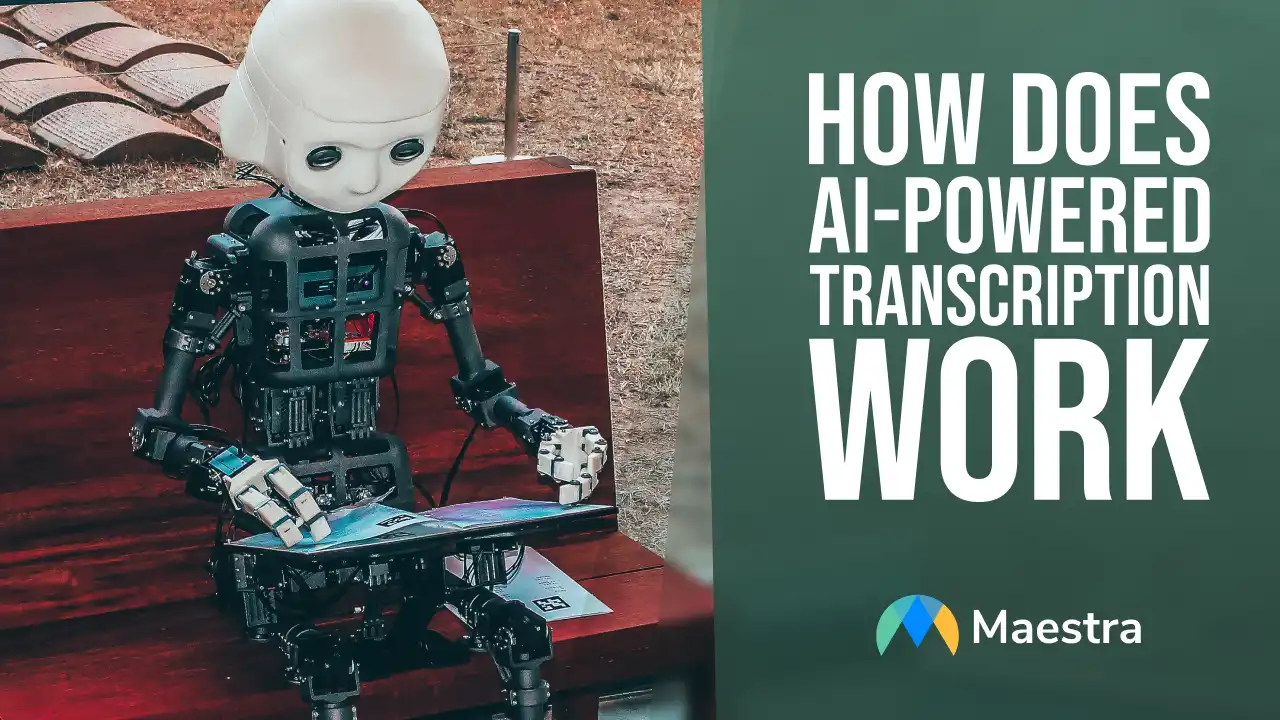How Does AI-Powered Transcription Work?

What Are The Different Types Of Transcription?
There are two different types of transcription methods: automatic transcription, and manual transcription. Before you delve into using automatic transcription and its benefits, it’s important to understand the differences between the two.What Is Manual Transcription?
You’ve no doubt heard of manual transcription. Perhaps you’ve even manually transcribed a few files yourself. This type of transcription involves listening to audio by ear, and typing out or writing down every word that you hear. To do this, you must limit background noise on both the recording and in the room you’re listening in. While manual transcription is the traditional way to transcribe audio or video to text, manual transcriptions are also more subject to error than automatic transcriptions. They take significantly more time and can be quite expensive. A manual transcription by a skilled human might take hours, but automated transcription services can be completed in as few as a few minutes or even seconds.What Is Automatic Transcription?
Automatic transcription is an AI-powered technology that changes spoken words into written text. Automatic transcription is completed by complex, intelligent computers rather than human beings. The systems use natural language processing (NLP) to transform the words into text. AI-generated transcripts are a game-changing solution that revolutionized the transcription industry. They save both time and money in the long-term.How Does Automatic Transcription Work?
Automatic transcription harnesses the power of AI to turn your audio and video files into flawless text transcriptions in just a few minutes. But what’s going on behind the scenes to make this process work? The process begins with audio or video files containing spoken words. As the user, you upload the files you want to be transcribed during this step. The files users submit are then fed into the automatic speech recognition (ASR) machines. The software uses Natural Language Processing (NLP) and machine learning algorithms to transcribe the audio into verbatim text. The ASR machines analyze the audio and use complex algorithms to identify and convert speech to text. While direct transcriptions are the most common request, AI can edit out ‘um’s,’ hmm’s, and other filler sounds. Once the computer has processed your automatic transcription, it appears on the screen in front of you in real-time if you’re using a service like Maestra Studio. You can then make any necessary edits to the text.Benefits Of AI Transcription
AI-powered transcription tools are highly accurate and can generate transcripts for audio files in real-time. That’s why they’re an efficient and cost-effective solution and a great alternative to manual transcription. There are many reasons why a business might choose AI transcriptions over manual transcriptions:- Saves time - AI transcriptions take anywhere from seconds to just a few minutes to do., With many tools, like Maestra Studio, you can even see the transcription appear on your screen in real-time as the machine does its job. On the flip side, manual translations can take days to even weeks, depending on the complexity and length of the content.
- Preserves confidentiality - When you send out confidential files to human translators, you have to trust that they will keep confidentiality. This poses security risks for your organization. When you send your files directly to an AI translator, though, they will never be seen by another human. So you don’t have to worry about industry secrets or client information being leaked.
- Improve accuracy - Manual transcriptions are subject to human error. Even the most skilled transcriptionists and translators occasionally make mistakes in their work. AI transcription services follow a specific formula and set of tasks to transcribe and translate your content, meaning your text won’t be filled with spelling errors or inaccuracies.
